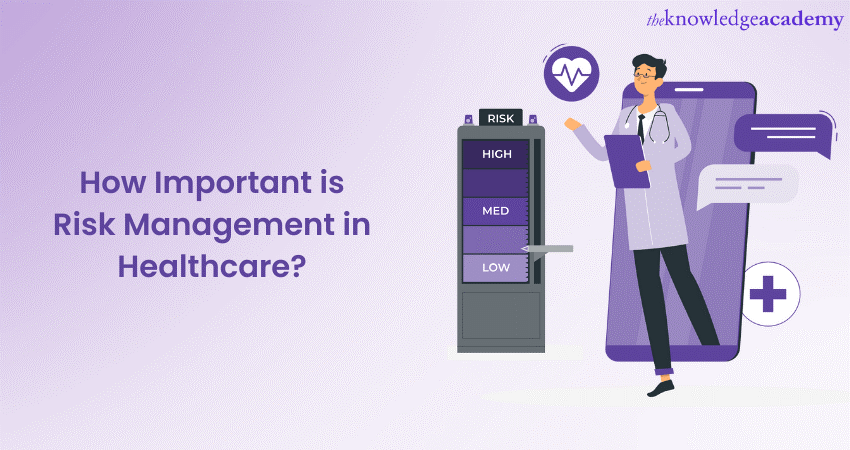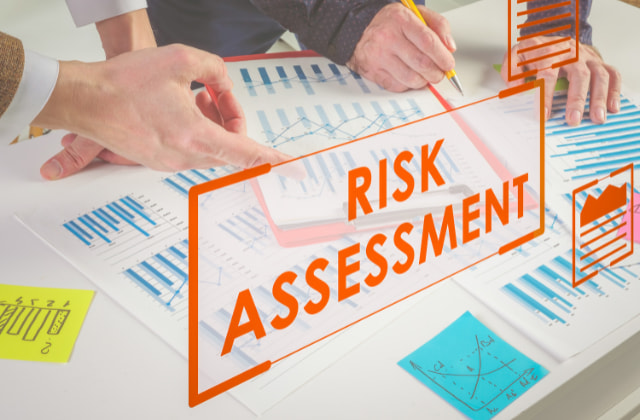The Unquestionable Importance of Risk Management in Safeguarding Organizational Success
The Unquestionable Importance of Risk Management in Safeguarding Organizational Success
Blog Article
Checking out the Importance of Risk Management for Effective Decision-Making Methods
In the intricate globe of organization, Risk Management emerges as an important factor in the decision-making procedure. The capacity to identify potential risks and chances, and plan accordingly, can lead to the distinction between success and failure.
Recognizing the Principle of Risk Management
Risk Management, a critical element in decision-making, is typically misunderstood or oversimplified. Risk Management entails disciplined and structured techniques, making use of information and insightful assessments. From economic uncertainties, lawful liabilities, tactical Management errors, to mishaps and all-natural catastrophes, it attends to different risks - importance of risk management.
The Duty of Risk Management in Decision-Making Processes
In the realm of calculated preparation and organization operations, Risk Management plays an integral function in decision-making processes. It assists in recognizing possible hazards and uncertainties that might affect the success of organization goals. By tracing these dangers, business can develop techniques to reduce their influence, making certain company continuity and security. Risk Management therefore becomes an essential device in decision-making, assisting leaders to make enlightened selections based on an extensive understanding of the risks involved. It encourages a proactive method, enabling companies to anticipate and prepare for possible future scenarios. This considerably reduces the probability of unfavorable effects, promoting much more reliable and efficient decision-making strategies. Consequently, Risk Management offers as an important component in the decision-making procedures of any company.

Exactly How Risk Management Enhances Strategic Planning
In the context of critical preparation, Risk Management plays a critical function. Initiating with the identification of possible threats, it additionally reaches the execution of Risk mitigation measures. The role of Risk Management is dynamic but not fixed, as it demands constant surveillance and adjusting of strategies.
Identifying Possible Risks

Implementing Risk Reduction
Having actually established the significance of identifying prospective threats, the next action is to discover Risk mitigation. This process entails creating and carrying out approaches to take care of recognized threats efficiently. It is a critical element of critical planning as it boosts decision-making by reducing potential adverse results. Risk reduction approaches can vary from Risk evasion, Risk transfer, to take the chance of decrease. Each technique ought to be tailored to the certain Risk, considering its potential influence and the organization's Risk tolerance. Moreover, efficient Risk reduction requires a deep understanding of the Risk landscape and the prospective effect of each Risk. This understanding enables organizations to prioritize threats and allot resources efficiently, making certain that one of the most substantial threats are addressed first.
Tracking and Changing Techniques
Though Risk mitigation is an important action in tactical planning, continuous monitoring and modification of these approaches is equally essential. This continuous process enables organizations to identify new dangers and reassess existing ones, ensuring the carried out approaches continue to be efficient in the ever-changing organization environment. It likewise gives a chance to review the success of the Risk Management procedures, permitting modifications to be made where required, more improving strategic Click This Link planning. Efficient surveillance and adjustment call for the use of analytics and vital efficiency indicators (KPIs) to determine effectiveness. These devices offer useful data-driven insights that can notify strategic decision-making. Consequently, monitoring and adjusting Risk Management techniques is a vital part for improving an organization's resilience and strategic planning.
Instance Studies: Effective Risk Management and Decision-Making
In the world of organization and money, effective Risk Management and decision-making often act as the columns of flourishing ventures. One such entity is an international oil company that alleviated economic loss by hedging versus varying oil prices. In another circumstances, a tech start-up thrived by identifying and accepting risky, high-reward strategies in an unpredictable market. A global financial institution, faced with regulative unpredictabilities, effectively navigated the situation via positive Risk analysis and vibrant decision-making. These instances highlight the worth of astute Risk Management in decision-making procedures. It is not the lack of Risk, but the Management of it, that frequently sets apart successful companies from not successful ones. These cases highlight the essential role of Risk description Management in calculated decision-making. importance of risk management.
Devices and Strategies for Reliable Risk Management
These devices, such as Risk signs up and warm maps, help in recognizing and evaluating potential risks. Risk reaction methods, a key element of Risk Management, involve accepting, preventing, moving, or mitigating risks. With these tools and methods, decision-makers can browse the facility landscape of Risk Management, consequently assisting in notified and efficient decision-making.
Future Patterns in Risk Management and Decision-Making Strategies
As we discover the vast landscape of Risk Management, it comes to be noticeable that the methods and devices made use of today will certainly proceed to evolve. The idea of Risk society, where every member of a company is aware and involved in Risk Management, will certainly gain extra importance. These fads advertise an even more positive read this article and inclusive approach towards Risk Management and decision-making.
Final thought

Risk Management therefore ends up being an important tool in decision-making, assisting leaders to make educated selections based on a comprehensive understanding of the threats included. Risk reduction techniques can vary from Risk evasion, Risk transfer, to run the risk of decrease (importance of risk management). Efficient Risk reduction calls for a deep understanding of the Risk landscape and the prospective influence of each Risk. Risk reaction strategies, an essential component of Risk Management, involve accepting, staying clear of, transferring, or mitigating threats. The principle of Risk society, where every member of an organization is mindful and involved in Risk Management, will certainly gain extra prominence
Report this page